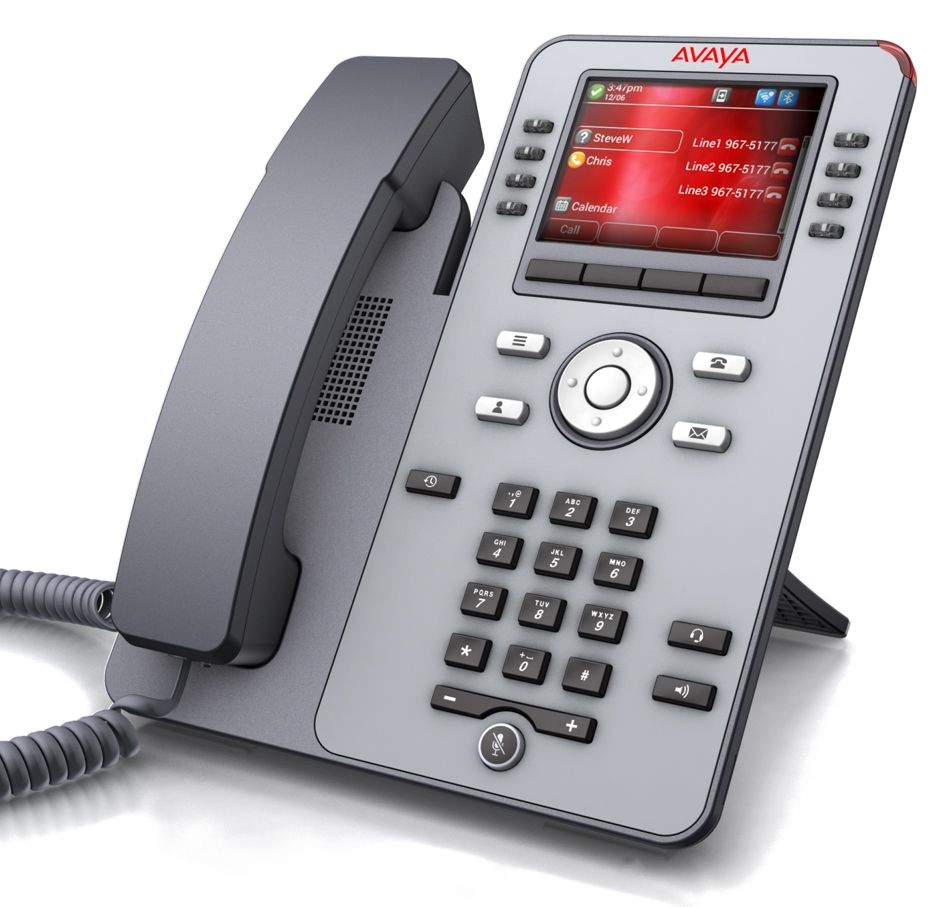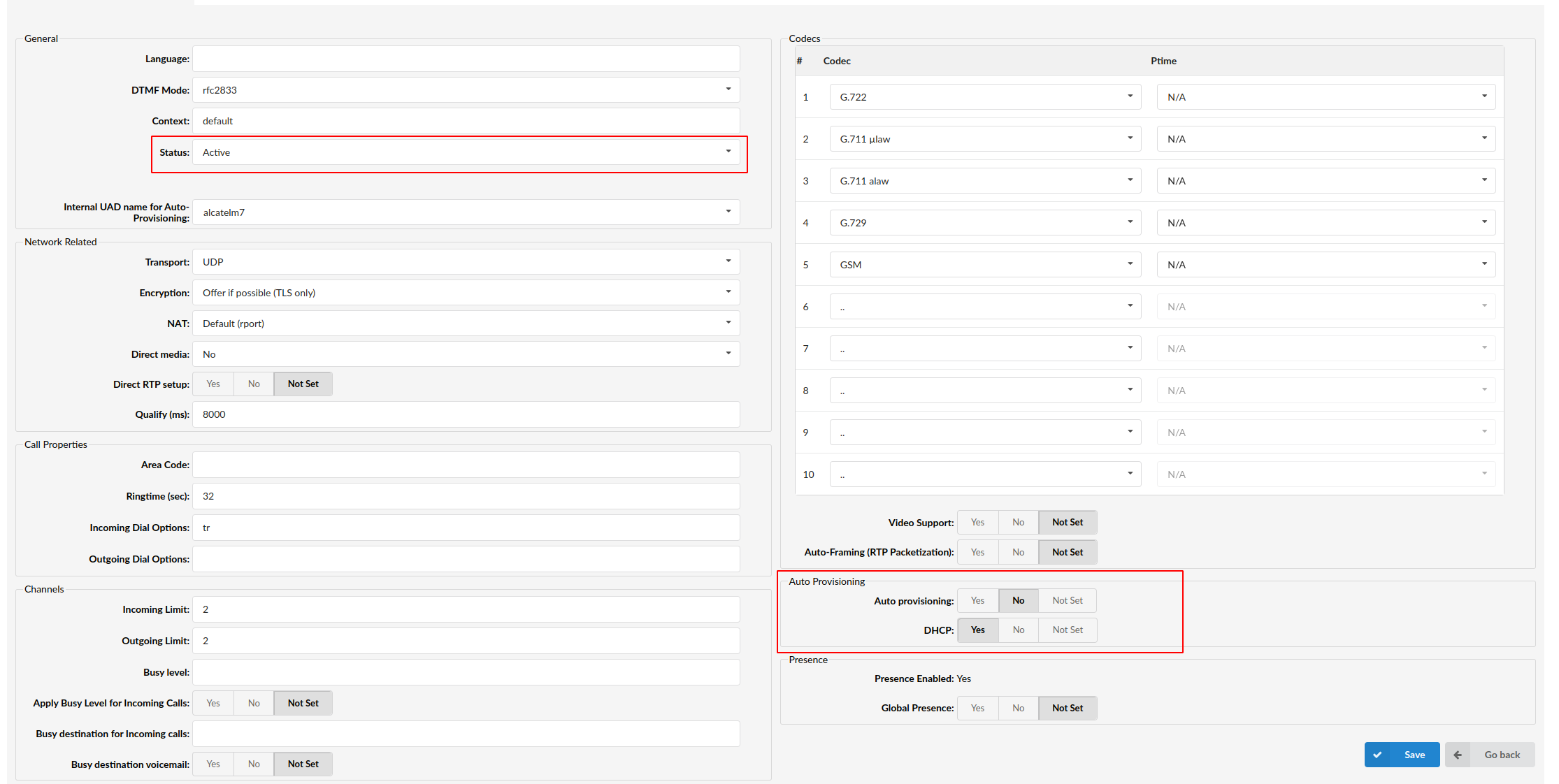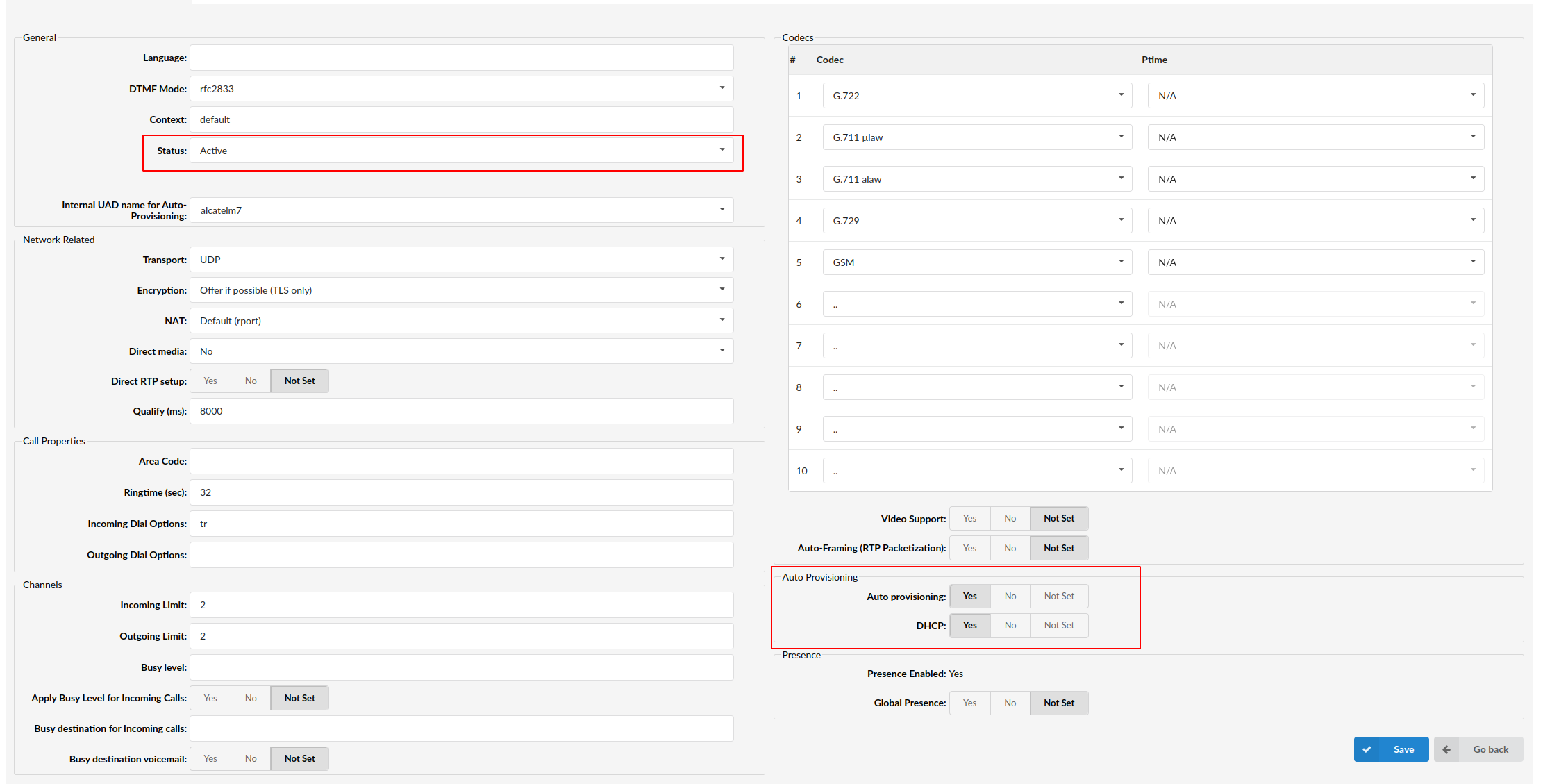¶ Introduction

This configuration guide is written as a general guide on how to configure the Avaya J179 phone model to work with PBXware 6.7.5.
¶ Requirements
¶ Identifying Phone Model
To start and successfully complete the registration of your Avaya J179 phone, you need to know which phone model to set up.
On the back of each Avaya phone, there is model information that you should check. Although various phone models can have exactly the same requirements and installation procedures, phone models can also have significantly different requirements and installation procedures, so that is why it is important to know the model you own which results in you setting up the device successfully.
¶ Phone Firmware
- Make sure that your phone is loaded with appropriate firmware version, 4.1.1.0.7.
- Avaya firmware pack need to be downloaded and extracted to tftp folder on server. For more information please visit Avaya firmware installation page.
¶ DHCP Server
Fully configured and operational DHCP server.
¶ PBXware Version
PBXware version 6.7.5
In order to find out the PBXware version:
- Log in to PBXware
- Navigate to Settings: About.
On the top of About page, you may see a code similar to this one PBXware Edition: Multi-Tenant Release: 6.7.5 (41a4f0e6) Running: 13.23.1-gc-2e09fa3d, Proxy v6.7.5 (231c5f3), API: 6.7, libmemcached version: 1.0.18, where Release denotes the current version of your PBXware.
¶ Installation
This section describes how to install and connect the phone to the electrical power and data network as well as how to apply factory settings.
The following topics are covered:
- Power Adapter
- Power over Ethernet (PoE)
- Factory Settings
¶ Power Adapter
Connect the Network and Power
- Connect the DC plug on the power adapter to the DC port on the phone and connect the other end of the power adapter into an electrical power outlet.
- Connect the Ethernet cable between the Internet port on the phone and the network port on a router or switch to access LAN.
NOTE: If you are using Power over Ethernet (PoE), you do not need to connect the AC adapter. Make sure that the Ethernet cable and router or switch is Power over Ethernet (PoE) compliant.
¶ Power over Ethernet (PoE)
Connect the Network (only)
Using a regular Ethernet cable, your phone can be powered from a Power over Ethernet (PoE) compliant router or switch.
- Connect the Ethernet cable between the Internet port on the phone and an available port on the in-line power router or switch.
NOTE: If you are using Power over Ethernet (PoE), you do not need to connect the AC adapter. Make sure the Ethernet cable and router or switch is Power over Ethernet (PoE) compliant.
¶ Find the Phone's IP Address
Find out your Avaya J179 phone's IP Address.
-
Press Admin
-
Dial 27238 and press Enter
-
Select IP Configuration
-
Select Ethernet IPv4
The IP address will be displayed under Phone field.
¶ Reset to Factory Settings
This step is not required for brand new out-of-the-box phones, however, if the phone has been already used, then it is a must.
- Click Reset to Default in the left-hand navigation menu.
- A pop-up window will show up. Click the OK button to confirm your action.
NOTE: Do not unplug or remove power from the phone while it is updating firmware and configuration.
¶ Registering Phone
This section describes how to identify the Avaya phone model, requirements that must be met, and how to register the phone using manual configuration or auto-provisioning.
The following topics are covered:
- Manual Configuration
- Auto Provisioning
¶ Manual Configuration
This section describes how to set the UAD settings, create a PBXware Extension and register the phone.
The following topics are covered:
- UAD Settings
- Creating an Extension
- Registering a Phone
¶ UAD Settings

UAD settings
Log in to the PBXware's web administration interface
- Open a new browser window and enter the IP address in order to access the PBXware's web administration login screen. Example: http://192.168.1.10.
- Log in to PBXware with the e-mail address and password.
UAD settings
- Navigate to Settings: UAD.
- Make sure Avaya J179 UAD is enabled. To check the UAD status, click the Edit icon corresponding to your Avaya J179 phone.
- Make sure Status is set to Active, Auto provisioning is set to No, and DHCP is set to Yes.
- Click the Save button to save changes.
¶ Creating an Extension

Creating Extension
Add an Extension
- Navigate to Extensions. Click Add Extension.
- The standard options window will be shown below.
- Select the Avaya J179 phone model from the UAD select box.
- Select Location: Local or Remote.
Local is for all Extensions registered on the LAN and Remote is for all Extensions registered from remote networks, WAN, Internet etc.
- Click the Next step button.
Extension values
Enter values into the required field text boxes.
REQUIRED FIELDS:
- Name
Enter a name for the Extension being created. Example: John Smith.
Enter the e-mail address associated with this Extension. This e-mail address will receive all system notification messages. Example: john.smith@bicomsystems.com
- Department
Department to which Extension belongs. Example: Sales.
- Click the Save button.
¶ Registering a Phone
This section describes how to register the Avaya phone using IP Address.
¶ Hostname or IP Address
Log in to the phone's web administration interface
- Open a new browser window and enter your phone IP address in order to access the phone's web administration interface login screen. Example: http://192.168.1.22
- Log in to the phone's web administration interface with your username and password. Please note that the factory default login details are as follows: username is admin and password is 27238.
- Go to SIP section in left navigation menu.
- Under SIP Global Settings section fill in required fields.
REQUIRED FIELDS:
- SIP Domain
Enter the IP Address of PBXware.
- Example of an IP Address: 192.168.1.10
- Proxy Policy
- Change to Manual
- SIP Proxy Server
Enter the IP Address of PBXware in following format: host:port;transport=xxx
- Example of an IP Address: 192.168.1.10:5060;transport=udp
- Click Save button at the bottom of page to save changes.
- In SIP Account section fill in follow required fields.
- Display name
PBXware Extension number. Example 1003.
- Sip User ID
PBXware Extension number. Example 1003.
- Authentication Password
The Secret of the Extension as received in the e-mail associated with this extension. Example: _%Z4M3*Ts9y7. A password is generated automatically for each newly created Extension.
- Click the Login button.
- If everything is done as described above, you should have successfully registered your phone to PBXware.
Dial *123 to verify the registration.
¶ Auto Provisioning
This section describes how to set UAD settings, create a PBXware Extension and register the phone using DHCP or Static IP address.
The following topics are covered:
- UAD Settings
- Creating an Extension
- Registering a Phone
¶ UAD Settings

UAD settings
Log in to the PBXware's web administration interface.
- Open a new browser window and enter the IP address in order to access the PBXware's web administration login screen. Example: http://192.168.1.10.
- Log in to PBXware with your e-mail address and password.
UAD settings
- Navigate to Settings: UAD.
- Make sure Avaya J179 UAD is enabled. To check the UAD status, click the Edit icon corresponding to your Avaya J179 phone.
- Make sure Status is set to Active, Auto provisioning is set to Yes, and DHCP is set to Yes.
- Click Save to save changes.
¶ Creating an Extension

Creating Extension
Add Extension
- Navigate to Extensions. Click Add Extension.
- The standard options window will be shown below.
- Select Avaya J179 phone model from the UAD select box.
- Select Location: Local or Remote.
Local is for all Extensions registered on the LAN and Remote is for all Extensions registered from remote networks, WAN, Internet etc.
- Click the Next step button.
Extension values
Enter values into the required field text boxes.
REQUIRED FIELDS:
- Name
Enter a name for the Extension being created. Example: John Smith.
Enter the e-mail address associated with this Extension. This e-mail address will receive all system notification messages. Example: john.smith@bicomsystems.com
- Auto Provisioning
Set to Yes.
- MAC Address
Enter the Avaya J179 phone's MAC address. Example: 001565FF1536. The MAC address can be found at the back of the phone.
- Click Save.
¶ Registering a Phone
This section describes how to register the Avaya J179 phone using HTTP.
- Open a new browser window and enter the phone's IP address, e.g. http://192.168.1.22.
- Enter Username and Password and press Login.
NOTE: The factory default login details are as follows: username is admin and password is 27238. - Click the IP Configuration tab in left navigation menu.
- Open Servers tab.
- Under HTTP Provisioning Server section enter HTTP server address in HTTP Server Address field.
Example of a Hostname using HTTP: abc.bicomsystems.com
Example of an IP Address using HTTP: 192.168.1.10
-
In HTTP Server Directory Path field enter prov.
-
Under Authentication Credentials to Provisioning Server section enter Auto Provisioning username and password into the User Name and User Password fields.
-
Click the Save button at the bottom of the page.
-
Click Restart in left navigation menu.
-
A pop up window will show up, click OK to confirm your action.
-
You will have to wait a couple of seconds for the configuration to be updated. NOTE: Do not power off your phone.
-
The auto-provisioning process will start during the phone's reboot process. The phone will pick up an appropriate configuration file from PBXware. If everything is done as described above, you should have successfully registered your phone to PBXware.
Dial *123 to verify registration.
¶ Configure BLF
This chapter describes how to configure BLF (Busy Lamp Field) for Avaya J179.
¶ Extension Settings
Login to PBXware web administration interface.
- Open a new browser window and enter the IP address in order to access the PBXware web administration login page. Example: http://192.168.1.10.
- Login to PBXware with your e-mail address and password.
Edit extension.
- On the Extensions page click on the edit icon corresponding to your extension.
- Click on Advanced Options button.
- Navigate down to the Auto Provisioning and Presence group of settings.
- Make sure Auto Provisioning is set to Yes.
- Make sure Presence is set to "Yes".
- Click on the Save button to save changes.
- Click on Enhanced services.
- Click on Directory / BLF List check box and click on Save button in order to enable this feature.
- Click on Directory / BLF List Edit button.
- Enter user extension number and click on the BLF check box.
- Click on Save button.
- Reboot your phone.